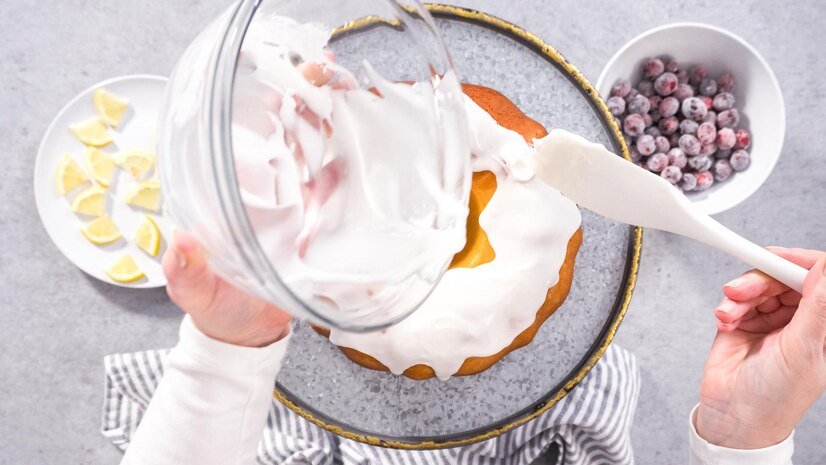If you’re looking for a creamy, tangy frosting for your cakes and cupcakes but want to avoid using powdered sugar, Cream Cheese Icing Without Powdered Sugar is a fantastic option. This version of cream cheese icing delivers the same rich, velvety texture and balanced flavor but without the sweetness that comes with traditional powdered sugar-based recipes.
Whether you’re aiming for a less sugary option or simply don’t have powdered sugar on hand, this icing will still create a deliciously smooth topping for your favorite desserts. By using alternative sweeteners like honey, maple syrup, or a small amount of granulated sugar, you can achieve the perfect balance of tangy and sweet.
This simple and versatile recipe is easy to make, and it’s perfect for anyone who enjoys a more natural, less sweetened frosting. Let’s dive into how you can create this delightful cream cheese icing without powdered sugar!
Ingredients
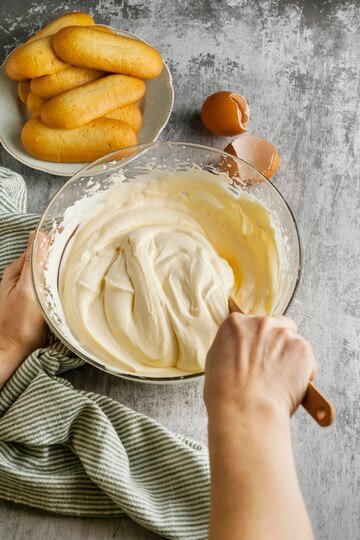
When making Cream Cheese Icing Without Powdered Sugar, you’ll need just a handful of simple ingredients that combine to create a deliciously creamy and tangy frosting. This recipe allows you to skip the usual powdered sugar but still achieve a smooth and perfectly sweet result. Here’s a breakdown of the essential ingredients you’ll need:
Cream Cheese
The foundation of this icing is cream cheese, which gives the frosting its signature tangy flavor and creamy texture. Make sure to use full-fat cream cheese for the best results, as it will create a richer, smoother icing. Let the cream cheese come to room temperature before using it to ensure there are no lumps and the texture is smooth when mixed.
Butter
Butter is the second key ingredient in the recipe. It adds richness and contributes to the smoothness of the icing. Just like the cream cheese, it’s essential to have the butter softened at room temperature. This ensures it mixes well with the other ingredients, providing a silky consistency.
Sweetener
Instead of powdered sugar, this icing uses a sweetener to balance the tangy flavor of the cream cheese. You can opt for a natural sweetener like honey or maple syrup for a more unique flavor profile. Alternatively, granulated sugar can be used if you prefer a traditional sweetness. For those looking for a sugar-free option, consider stevia or erythritol as a low-calorie substitute.
Vanilla Extract
Vanilla extract adds depth to the flavor of the icing, enhancing the overall taste. The richness of vanilla perfectly complements the tangy cream cheese and smooth butter, making your icing more flavorful and aromatic. Just a teaspoon is enough to bring out the best in your frosting.
Salt
A pinch of salt is an essential ingredient in balancing the sweetness of the icing and the tang of the cream cheese. It enhances all the flavors in the frosting and helps to prevent it from becoming too sweet.
Milk or Cream (Optional)
If you find that the icing is too thick or you need to adjust the consistency, milk or cream can be added in small amounts. This will make the frosting smoother and easier to spread, especially if you’re using it for cakes or cupcakes.
Equipment Needed

Making Cream Cheese Icing Without Powdered Sugar is a straightforward process, but using the right equipment will ensure that your icing turns out smooth and creamy, with the perfect consistency. Here’s a list of essential tools that will help you achieve the best results:
Mixing Bowls
You’ll need a mixing bowl large enough to combine all of your ingredients. A glass or stainless steel bowl is ideal because they won’t retain odors or stain like plastic can. A medium-sized bowl should work perfectly for most recipes, but if you’re making a larger batch, consider using a bigger bowl to give yourself ample space for mixing.
Electric Mixer or Stand Mixer
An electric hand mixer or stand mixer is highly recommended for making this icing. The beaters will help to blend the cream cheese and butter smoothly, preventing any lumps from forming. If you’re using a hand mixer, make sure it’s set on medium speed to ensure even mixing without splattering. For those who have a stand mixer, the paddle attachment works best for achieving a fluffy, well-incorporated frosting.
Spatula or Whisk
A spatula or whisk will be useful for scraping the sides of your mixing bowl as you go along, ensuring that every bit of cream cheese and butter gets fully mixed in. A silicone spatula is a great tool for this job as it’s flexible and won’t scratch your bowls. A whisk can be helpful if you prefer to mix by hand or want to make sure all the ingredients are well-incorporated at the end.
Measuring Cups and Spoons
For accuracy, measuring cups and measuring spoons are a must. Even though the ingredients in this icing are fairly simple, measuring everything out correctly ensures that your proportions are balanced. For liquid ingredients like vanilla extract or honey, make sure to use a liquid measuring cup, while dry ingredients like sugar or salt should be measured with dry measuring cups and spoons.
Sifter or Fine Mesh Strainer (Optional)
While powdered sugar is not a part of this recipe, if you are using any other powdered sweetener (like powdered stevia), a sifter or fine mesh strainer may come in handy. This will help to eliminate any lumps and ensure your sweetener is evenly distributed throughout the icing. It’s an optional tool, but it can make a big difference in achieving a silky-smooth texture.
Piping Bags or Spreader (Optional)
If you’re using the cream cheese icing for decorating, a piping bag with your choice of tip can help you create decorative designs. If you prefer to simply spread the icing, a spreader or offset spatula will give you control over how thickly you apply the icing and will create a smooth, even finish on your cake or cupcakes.
Instructions Step by Step
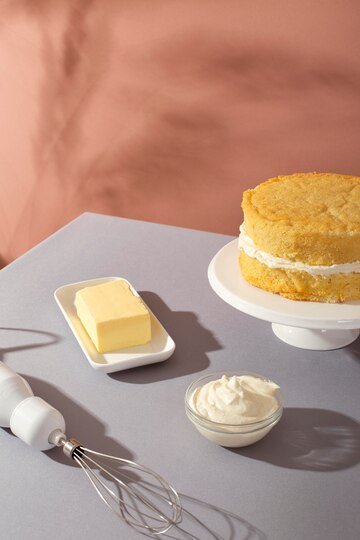
Creating a creamy and delicious cream cheese icing without powdered sugar is entirely doable and surprisingly simple. Whether you’re aiming for a healthier version or just ran out of powdered sugar, this step-by-step guide will walk you through the process with ease. Here’s how to make a smooth, rich icing using minimal ingredients and no powdered sugar.
Step 1: Soften the Cream Cheese and Butter
Start by taking your cream cheese and butter out of the refrigerator about 30–45 minutes before you begin. They should both be softened to room temperature. This step is important because softened cream cheese and butter blend more easily and result in a smoother, lump-free icing. If you’re short on time, you can cut them into small cubes to speed up the softening process.
Step 2: Blend the Cream Cheese and Butter
Place the softened cream cheese and butter into a mixing bowl. Use a hand mixer or stand mixer with the paddle attachment to beat them together on medium speed until the mixture is smooth and creamy. This usually takes about 2–3 minutes. Don’t rush this step—thorough mixing ensures a uniform base for your icing.
Step 3: Add the Sweetener Gradually
Instead of powdered sugar, you’ll use an alternative sweetener like honey, maple syrup, agave nectar, or a granulated sugar substitute such as erythritol or stevia blend. Add your sweetener gradually—start with about 2–3 tablespoons and increase to taste. Mix well after each addition to make sure the sweetener is fully incorporated. If you’re using a granulated alternative, consider dissolving it in a tiny bit of warm milk or water to avoid graininess.
Step 4: Add Flavor Enhancements
Once the base is well combined and sweetened to your liking, add in your vanilla extract (about 1 teaspoon) for that classic cream cheese frosting flavor. You can also add a pinch of salt to enhance the sweetness and round out the flavor. At this stage, you can experiment with other flavors too—like a splash of lemon juice, almond extract, or even a touch of cinnamon for a warm note.
Step 5: Adjust Texture and Consistency
Depending on your sweetener choice, the texture may be thicker or thinner. If it feels too thick, add 1 teaspoon of milk at a time until you reach the desired consistency. For a thicker icing suitable for piping or layering, refrigerate the mixture for 15–20 minutes. If you want a looser glaze-like consistency for drizzling, continue thinning it with milk or cream a little at a time.
Step 6: Chill Before Using (Optional)
While your icing is now ready to use, you can chill it in the refrigerator for 20–30 minutes if you want a firmer consistency—especially helpful if you plan to pipe it onto cupcakes or spread it evenly on cakes. Stir gently after chilling to restore its creamy texture before using.
Step 7: Use or Store Properly
Spread your finished cream cheese icing immediately over cooled cakes, muffins, or cupcakes. If you’re not using it right away, transfer it to an airtight container and store it in the refrigerator for up to 5 days. For longer storage, you can freeze the icing for up to 1 month—just thaw in the fridge overnight and re-whip it briefly before using.
Tips for Smooth and Fluffy Icing
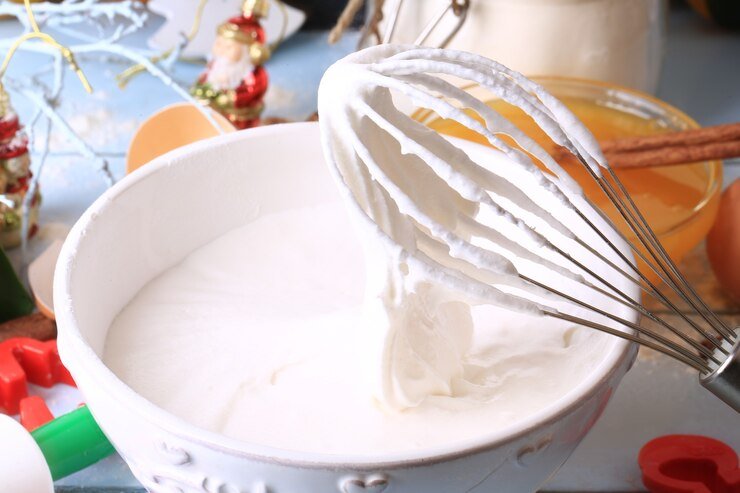
Achieving smooth and fluffy cream cheese icing without powdered sugar may sound tricky, but with the right techniques and ingredients, you can create a perfectly spreadable or pipeable frosting every time. Here are some helpful tips to ensure your icing turns out luscious, creamy, and light.
Use Fully Softened Cream Cheese and Butter
The temperature of your ingredients makes a big difference. For the silkiest texture, make sure both cream cheese and butter are softened to room temperature before mixing. Cold ingredients can lead to lumps, while overly warm ones may make the icing too soft or greasy. Leave them out for 30–45 minutes or cut them into small cubes to speed things up.
Choose the Right Sweetener
Since you’re skipping powdered sugar, the type of sweetener you choose will influence the texture and flavor. Liquid sweeteners like maple syrup or honey blend easily but can thin the icing, so add gradually. Granulated sugar alternatives may need to be dissolved in a small amount of warm liquid before mixing to avoid a grainy finish. Taste as you go and adjust to your preferred level of sweetness.
Don’t Overmix the Icing
While it’s important to beat the cream cheese and butter until smooth, overmixing after adding the sweetener can lead to a runny texture. Once everything is fully incorporated and you reach the desired consistency, stop mixing. If the icing becomes too soft, chill it for 20–30 minutes before using.
Add a Thickening Agent If Needed
If your icing ends up too loose, there are a few ways to thicken it. You can add a tablespoon of cornstarch, a small amount of full-fat cream cheese, or chill it in the fridge. Each method helps stabilize the icing without affecting the flavor much. Be cautious with the amount so the taste stays balanced.
Whip for Extra Fluffiness
To achieve that light, airy texture, whip the icing on medium-high speed for an extra minute or two once all ingredients are incorporated. This step adds volume and improves the overall mouthfeel. Just be sure not to overdo it or the icing can lose structure.
Natural Sweeteners You Can Use
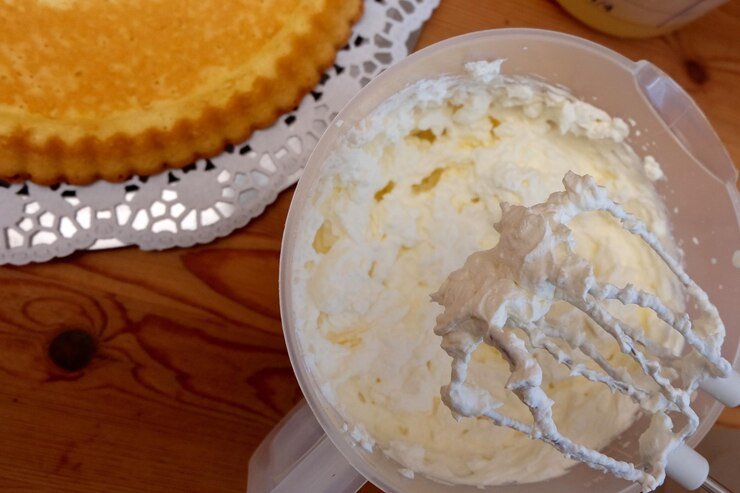
When making cream cheese icing without powdered sugar, choosing the right natural sweetener is essential. Not only do natural sweeteners offer a more wholesome option, but they also add unique flavors that can enhance your frosting. Below are some of the best natural sweeteners you can use, along with how they affect texture, taste, and consistency.
Honey
Honey is a popular and easily accessible natural sweetener that works well in cream cheese icing. It blends smoothly and adds a subtle floral sweetness. However, because honey is liquid, it can thin out the icing. Start with a small amount—about 2 to 3 tablespoons—and adjust as needed. For thicker results, chill the icing after mixing or add a thickening agent like cornstarch.
Maple Syrup
Maple syrup offers a rich, earthy flavor that pairs beautifully with cream cheese. It’s especially good if you’re going for a fall-inspired frosting. Like honey, it can soften the icing, so it’s best used sparingly—just a few tablespoons can go a long way. Grade A maple syrup is milder, while Grade B offers a more robust taste. Chill the icing if it becomes too runny.
Coconut Sugar
Coconut sugar is a granulated sweetener with a caramel-like flavor, making it a great choice for adding depth to your icing. Unlike honey or syrup, it won’t make your frosting runny, but it does need to be dissolved in a warm liquid (like milk or cream) to avoid a gritty texture. Blend it in carefully and allow the icing to chill slightly to smooth it out.
Date Syrup
Made from cooked and blended dates, date syrup is thick and rich, with a molasses-like flavor. It adds natural sweetness and nutrients, including fiber and minerals. Because of its bold taste and dark color, it’s best used in small amounts and works wonderfully in spiced or chocolate frostings.
Agave Nectar
Agave nectar is sweeter than honey and has a neutral flavor, making it ideal if you want the cream cheese flavor to shine. Like other liquid sweeteners, it can loosen the icing, so you may need to refrigerate the mixture or beat in more cream cheese to balance the consistency.
Variations and Flavor Add-ins
When it comes to making cream cheese icing without powdered sugar, the beauty lies in its versatility. You can personalize your icing with a variety of flavor add-ins and variations to match any dessert or seasonal craving. Whether you’re going for something rich and bold or light and zesty, there’s a flavor combination to suit your taste.
Vanilla and Citrus Zest
Vanilla extract is a classic and always a welcome addition. Just a teaspoon can round out the tang of the cream cheese and give your icing a warm, mellow base. If you want to brighten the flavor, consider adding citrus zest—like lemon or orange. These zesty notes pair especially well with fruit-based cakes and muffins. Start with about 1 teaspoon of zest for a fresh kick that complements rather than overpowers.
Cocoa or Melted Chocolate
For a chocolate twist, cocoa powder or melted dark chocolate works beautifully. Unsweetened cocoa gives a rich, bittersweet edge to the icing, perfect for topping banana bread, chocolate cake, or even brownies. Use 1 to 2 tablespoons of cocoa, or about 2 ounces of melted chocolate, and make sure to balance it with a natural sweetener like honey or maple syrup for a smoother taste.
Spices and Warm Flavors
If you’re making this icing for fall or winter treats, adding spices like cinnamon, nutmeg, or even a pinch of cloves can elevate the flavor dramatically. These warm spices enhance pumpkin, carrot, or apple desserts. Add ¼ to ½ teaspoon of your chosen spice, and adjust based on how bold you want the flavor.
Nut Butters and Extracts
Almond or cashew butter can give your cream cheese icing a rich, nutty background and a slightly thicker consistency. Stir in 1 to 2 tablespoons for a deeper flavor. Alternatively, almond or coconut extract (used sparingly) can add complexity without overwhelming the icing. A few drops go a long way—start with ⅛ teaspoon and build up to taste.
Fruit Purees
If you’re feeling adventurous, fruit purees like mashed strawberries, raspberries, or even pumpkin can bring both flavor and color to your icing. Use about 2 tablespoons and reduce any extra liquid to avoid making the icing too loose. These add-ins are perfect for layered cakes or cupcakes where visual appeal matters.
Storage and Shelf Life
Cream cheese icing without powdered sugar may be naturally sweetened, but it still contains perishable ingredients like cream cheese and butter. Proper storage is essential to maintain its texture, flavor, and safety. Whether you’re preparing ahead or saving leftovers, knowing how to store your icing will help you get the most out of every batch.
How to Store in the Refrigerator
Once you’ve made your cream cheese icing, it should be stored in an airtight container and kept in the refrigerator. Since it doesn’t contain stabilizers or preservatives, refrigeration helps maintain freshness and prevents bacterial growth. The icing will stay fresh for up to 5 to 7 days when properly stored.
Before using it again, let it sit at room temperature for 10 to 15 minutes. This softens the texture, making it easier to spread or pipe onto baked goods.
Can You Freeze Cream Cheese Icing?
Yes, you can freeze cream cheese icing, even if it’s made without powdered sugar. Freezing is a great option if you’ve made a large batch or want to prep ahead. Place the icing in a freezer-safe container, leaving a little space at the top for expansion. It can be stored in the freezer for up to 2 months.
When you’re ready to use it, thaw the icing in the fridge overnight. After thawing, beat it with a hand mixer or whisk to restore its creamy consistency, as it may separate slightly.
Best Practices for Storage and Reuse
Avoid repeated temperature changes—only scoop out what you need and return the rest to the fridge. If your icing develops a sour smell, watery texture, or discoloration, it’s best to discard it.
Always use clean utensils to avoid introducing bacteria, especially if you plan to store it for several days. For portioning ease, you can also pre-freeze the icing in smaller amounts using silicone molds or freezer-safe bags.
FAQs
Can You Make Cream Cheese Icing Without Powdered Sugar?
Yes, you absolutely can make cream cheese icing without powdered sugar. Instead of using powdered sugar for sweetness and texture, you can substitute it with natural sweeteners like honey, maple syrup, agave nectar, or even date paste. These alternatives not only sweeten the icing but also bring in unique flavors.
However, because these sweeteners are liquid, you may need to slightly adjust other ingredients to keep the frosting thick and spreadable.
What Can I Use Instead Of Powdered Sugar In Cream Cheese Icing?
You can use several alternatives depending on your taste and dietary needs. Honey and maple syrup are two of the most popular options, as they blend smoothly with cream cheese and add a subtle depth of flavor.
Coconut sugar, date syrup, stevia, or monk fruit sweeteners can also work well. If using liquid sweeteners, make sure to refrigerate the icing to help it set properly.
Will Cream Cheese Icing Without Powdered Sugar Hold Its Shape?
Cream cheese icing without powdered sugar is usually softer and may not be as stiff as traditional frosting. If you need it to hold its shape for piping or decorating, try chilling it for 20–30 minutes before use. You can also add a small amount of cornstarch or arrowroot powder to help thicken the texture without compromising taste or consistency.
How Long Does Cream Cheese Icing Without Powdered Sugar Last?
When stored properly in an airtight container in the refrigerator, cream cheese icing without powdered sugar will last about 5 to 7 days. For longer storage, you can freeze it for up to 2 months. Just thaw it in the fridge overnight and whisk or beat it before using to restore its smooth texture.
Is Cream Cheese Icing Without Powdered Sugar Healthier?
Cream cheese icing without powdered sugar can be a healthier option, especially if you use natural sweeteners like honey or maple syrup. These sweeteners often contain fewer processed ingredients and offer trace nutrients. However, it’s still important to enjoy it in moderation, as cream cheese and sweeteners—natural or not—still contribute to the overall calorie content.
Conclusion
Cream cheese icing without powdered sugar is a delicious and healthier twist on the classic frosting. Whether you’re cutting back on processed sugars or simply looking to try something new, this version offers just as much flavor with a naturally smooth and creamy texture.
Using natural sweeteners like honey, maple syrup, or date paste adds unique depth and makes the icing suitable for a variety of dietary preferences. It’s easy to prepare, versatile enough for cakes, muffins, or cookies, and can be stored for future use.
With a few simple adjustments, you can enjoy a rich, tangy cream cheese icing that’s both satisfying and better aligned with your wellness goals.

